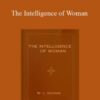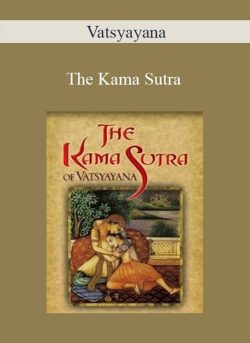$19.00
Digital Download: You will receive a download link via your order email
Save up to 85% compared to Salepage prices. In addition, earn additional points. Save more on your next order.
Please contact email: esygbteam@gmail.com if you have any questions about this course.
 Purchase this course you will earn 19 Points worth of $1.90
Purchase this course you will earn 19 Points worth of $1.90Elevate your skills with the Vatsyayana – The Kama Sutra course, available for just $19.00 on Utralist.com! Browse our curated selection of over 60,000 downloadable digital courses across diverse Seduction and Love. Benefit from expert-led, self-paced instruction and save over 80%. Start learning smarter today!
 Vatsyayana – The Kama Sutra
Vatsyayana – The Kama Sutra
The Kama Sutra is an ancient Indian Hindu text widely considered to be the standard work on human sexual behavior in Sanskrit literature written by Mallanaga Vatsyayana. A portion of the work consists of practical advice on sexual intercourse. The Kama Sutra is largely in prose, with many inserted anustubh poetry verses. “Kama” means sensual or sexual pleasure, and “sutra” literally means a thread or line that holds things together, and more metaphorically refers to an aphorism (or line, rule, formula), or a collection of such aphorisms in the form of a manual. The modern English word “suture” is derived from the same root.
The Kama Sutra is the oldest and most notable of a group of texts known generically as Kama Shastra (Sanskrit: Kama Sastra). Traditionally, the first transmission of Kama Shastra or “Discipline of Kama” is attributed to Nandi the sacred bull, Shiva’s doorkeeper, who was moved to sacred utterance by overhearing the lovemaking of the god and his wife Parvati and later recorded his utterances for the benefit of mankind.
Historian John Keay says that the Kama Sutra is a compendium that was collected into its present form in the second century CE.
Delivery Method
Cultivate continuous growth with the Vatsyayana – The Kama Sutra course at Utralist.com! Unlock lifetime access to premium digital content, meticulously designed for both career advancement and personal enrichment.
- Lifetime Access: Enjoy limitless access to your purchased courses.
- Exceptional Value: Benefit from savings up to 80% on high-quality courses.
- Secure Transactions: Your payments are always safe and protected.
- Practical Application: Gain real-world skills applicable to your goals.
- Instant Accessibility: Begin your learning journey immediately after buying.
- Device Compatible: Access your courses seamlessly on any device.
Transform your potential with Utralist.com!
Related products
Seduction and Love
= 9 Points
Seduction and Love
= 5 Points
Seduction and Love
Ross Jeffries – Speed Seduction – Methods and Masters Gold Walkups
= 6 Points
Seduction and Love
= 25 Points
Seduction and Love
= 16 Points
Seduction and Love
Gio Di Lorenzo – Dio Degli Orgasmi (Dio degli Orgasmi di Gio di Lorenzo)
= 8 Points
Seduction and Love
Dan Bacon – The Modern Man: The Modern Relationship Optimized Version
= 11 Points
Seduction and Love
= 14 Points




 Vatsyayana – The Kama Sutra
Vatsyayana – The Kama Sutra







